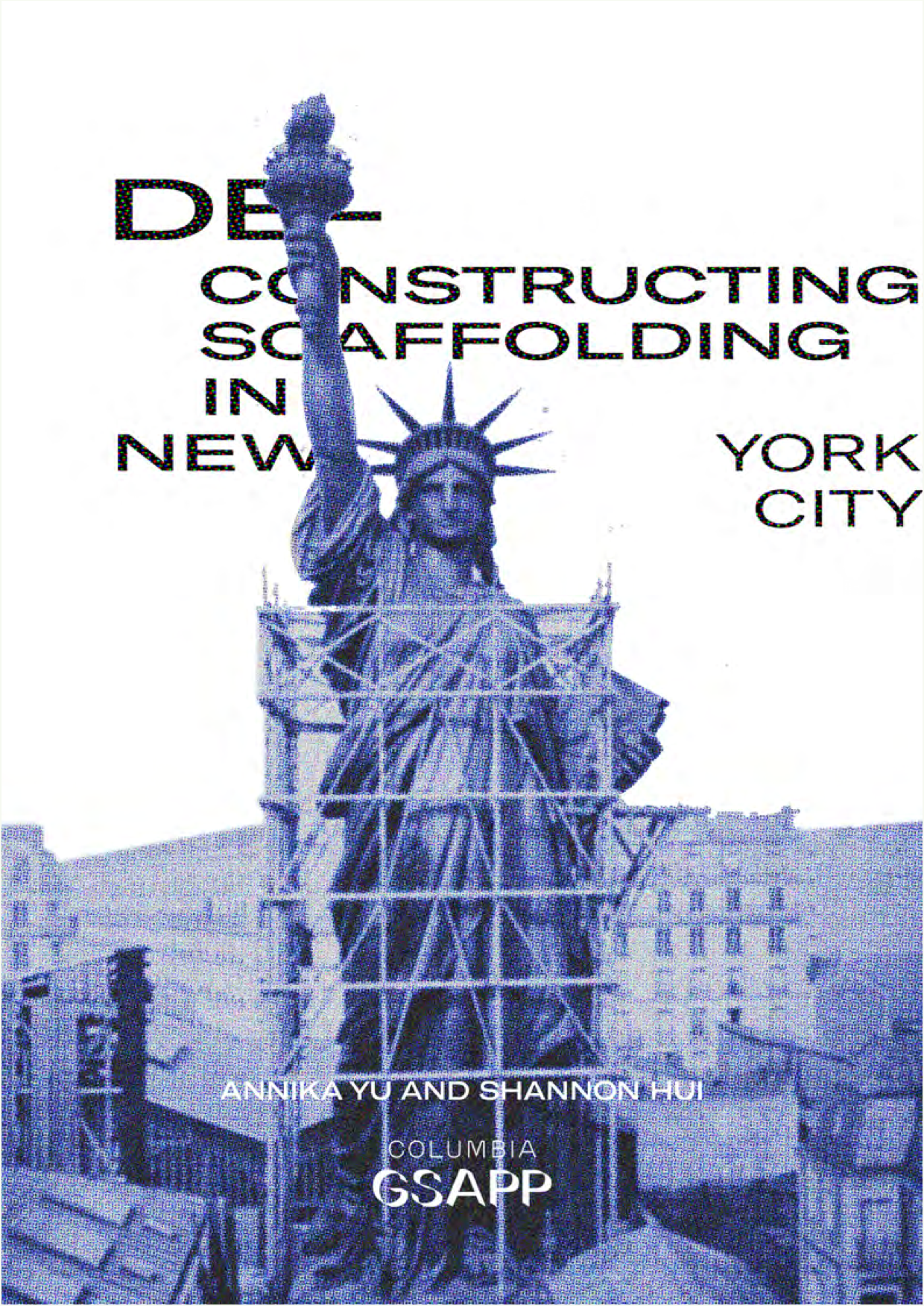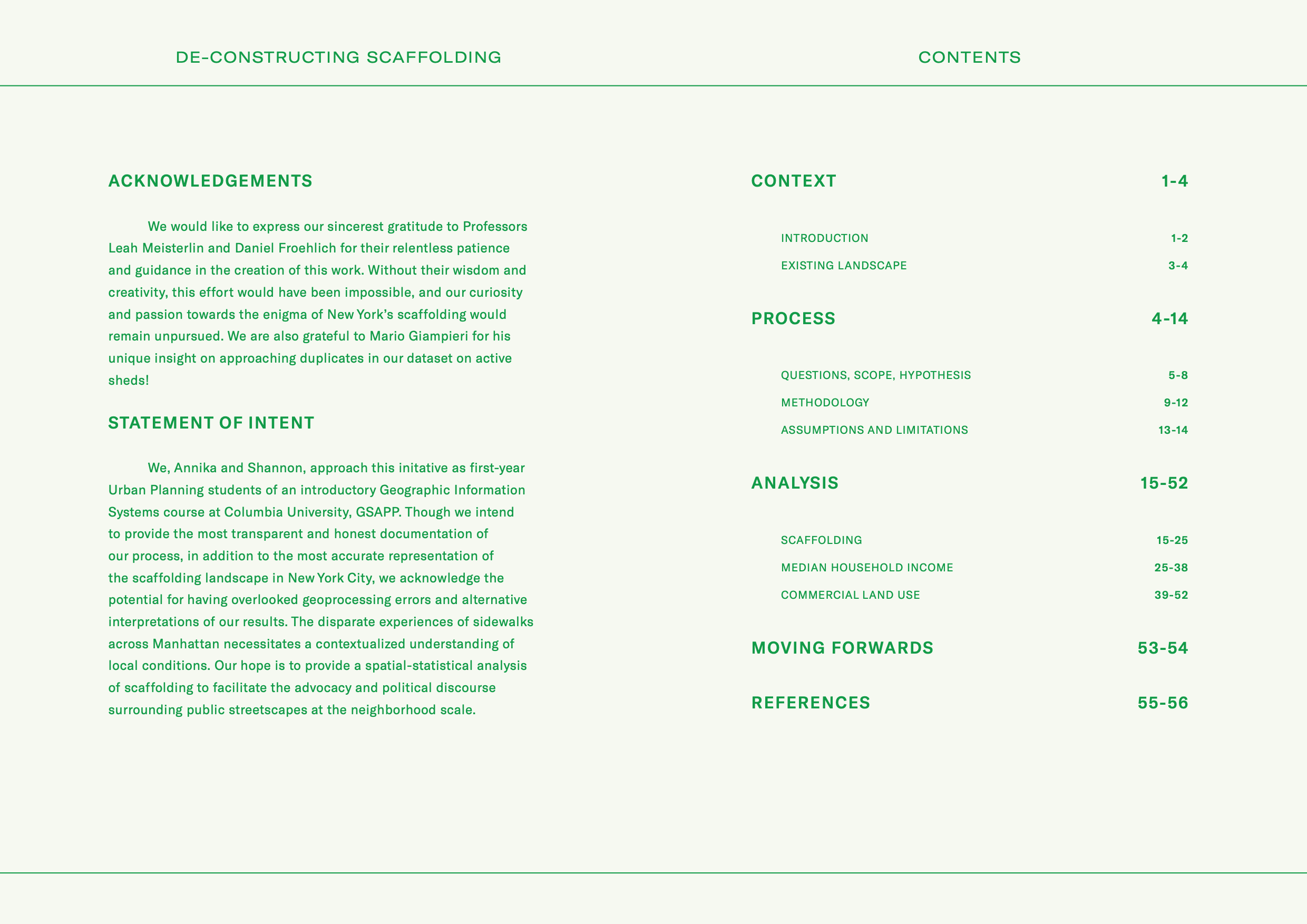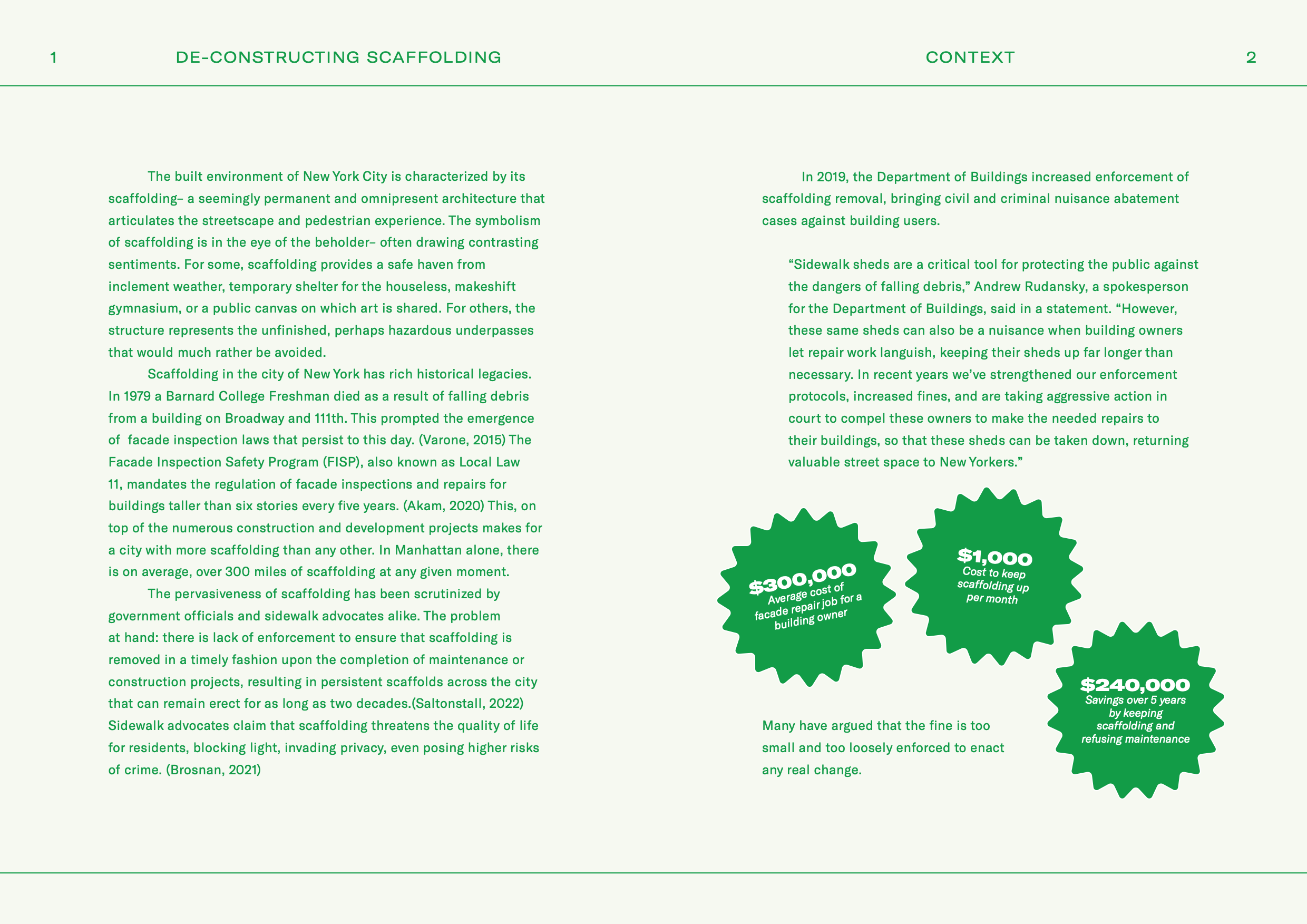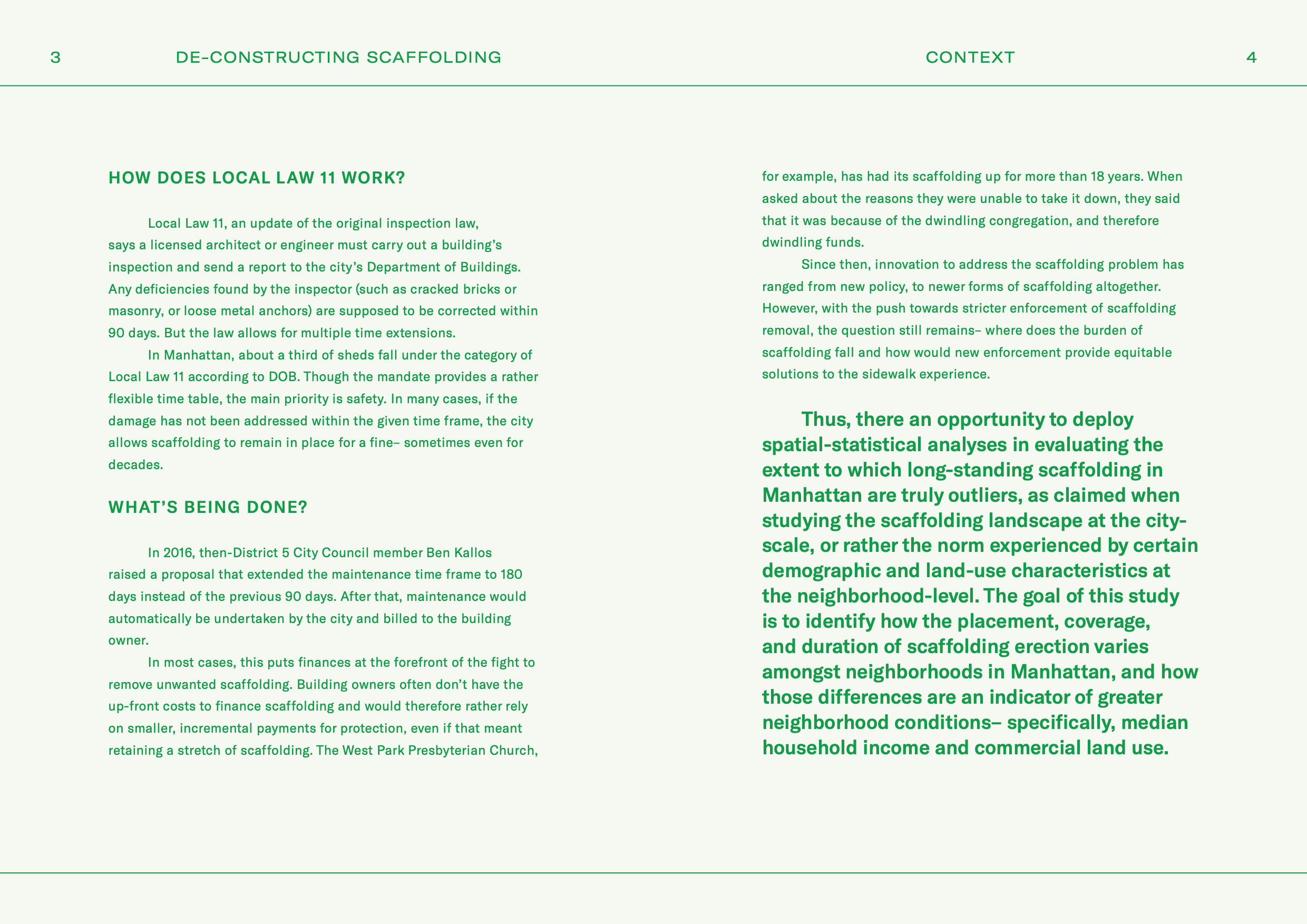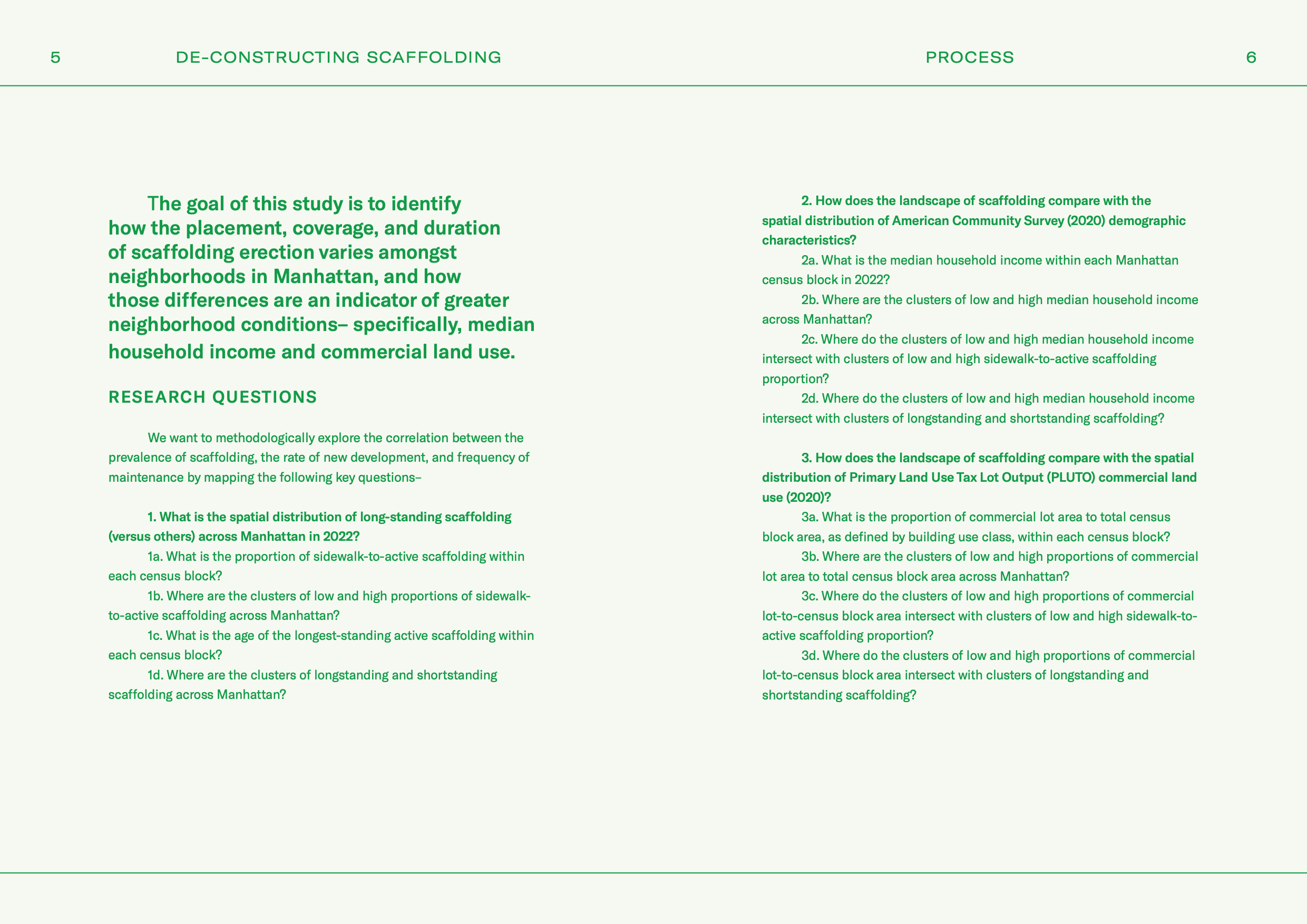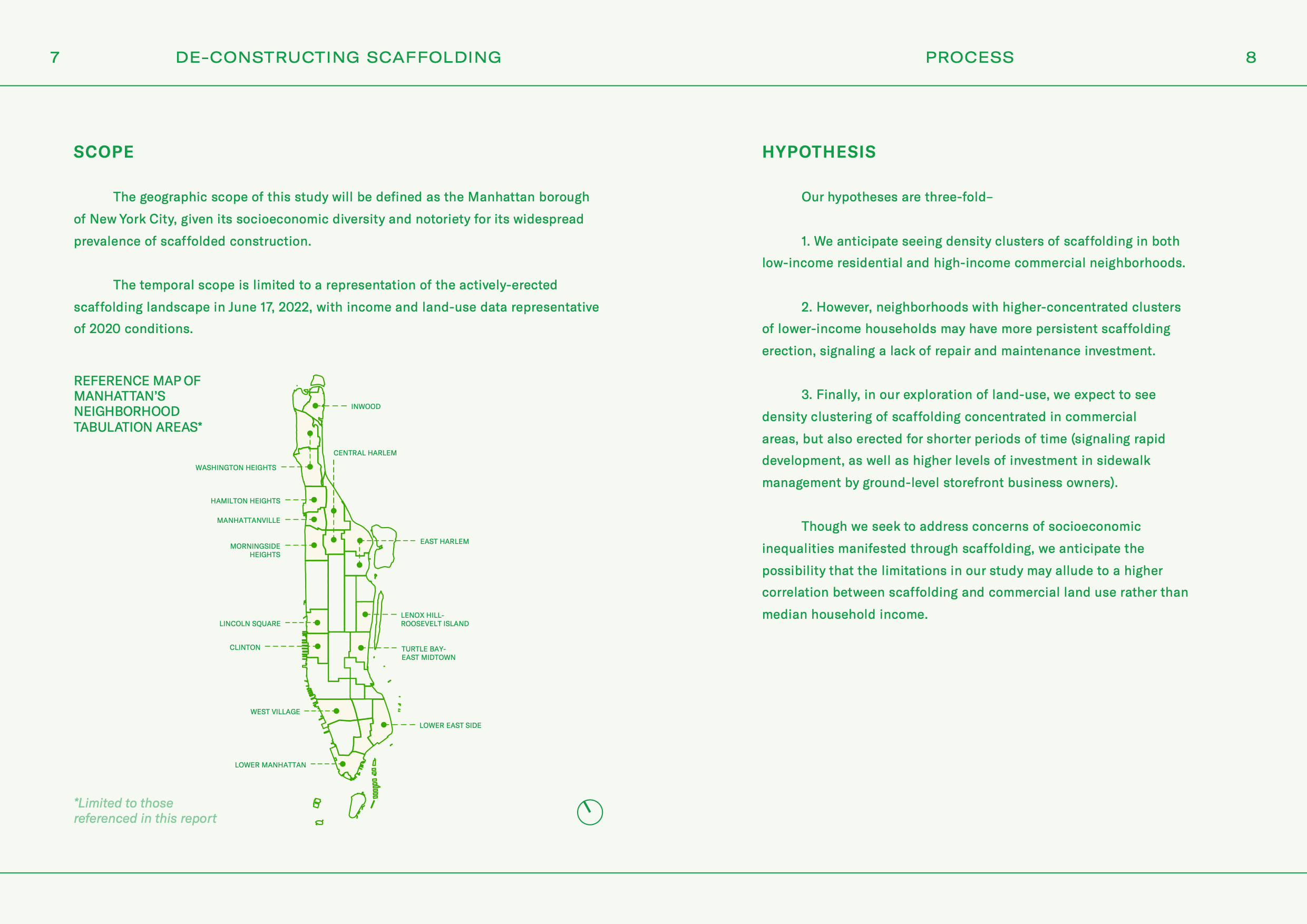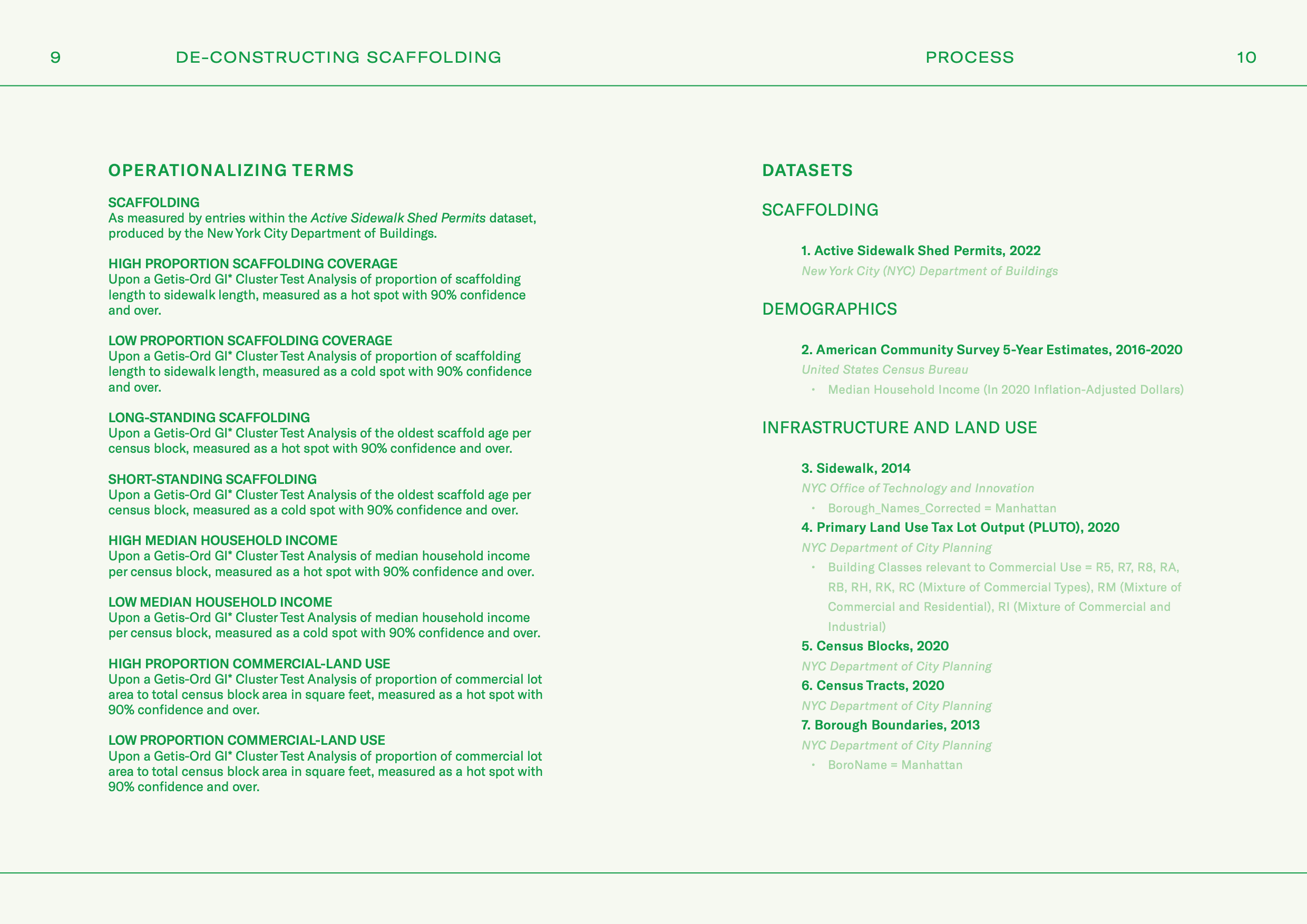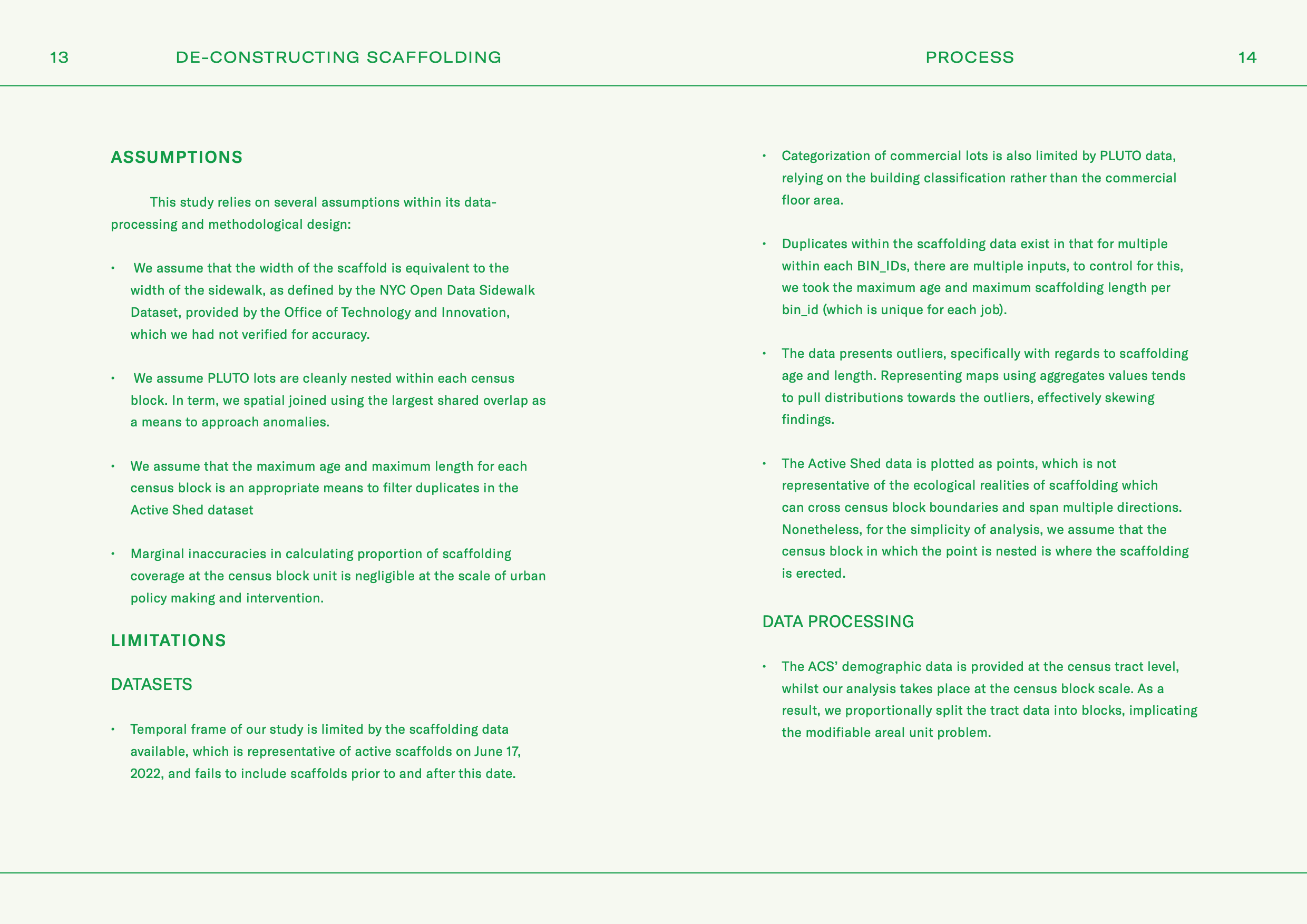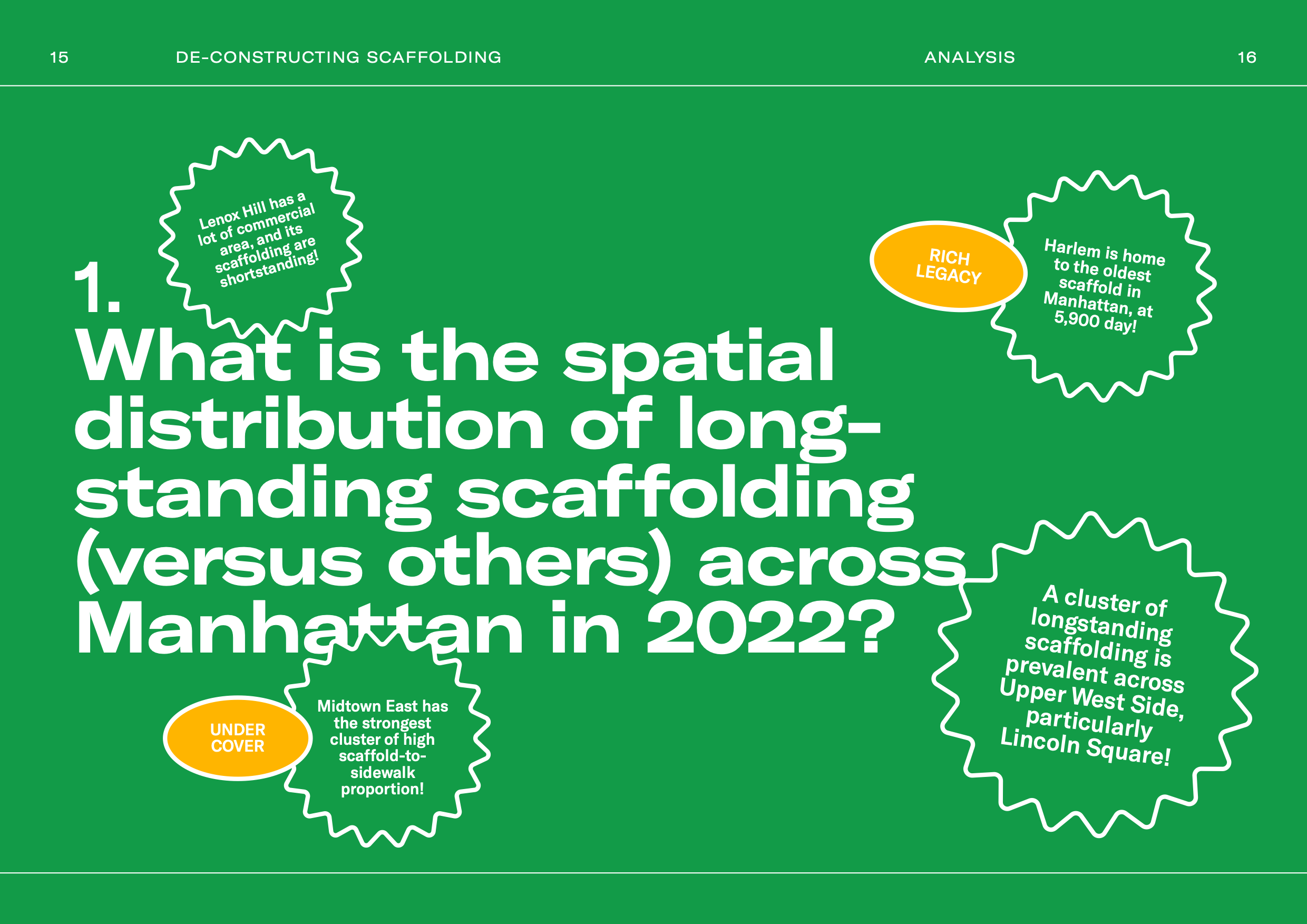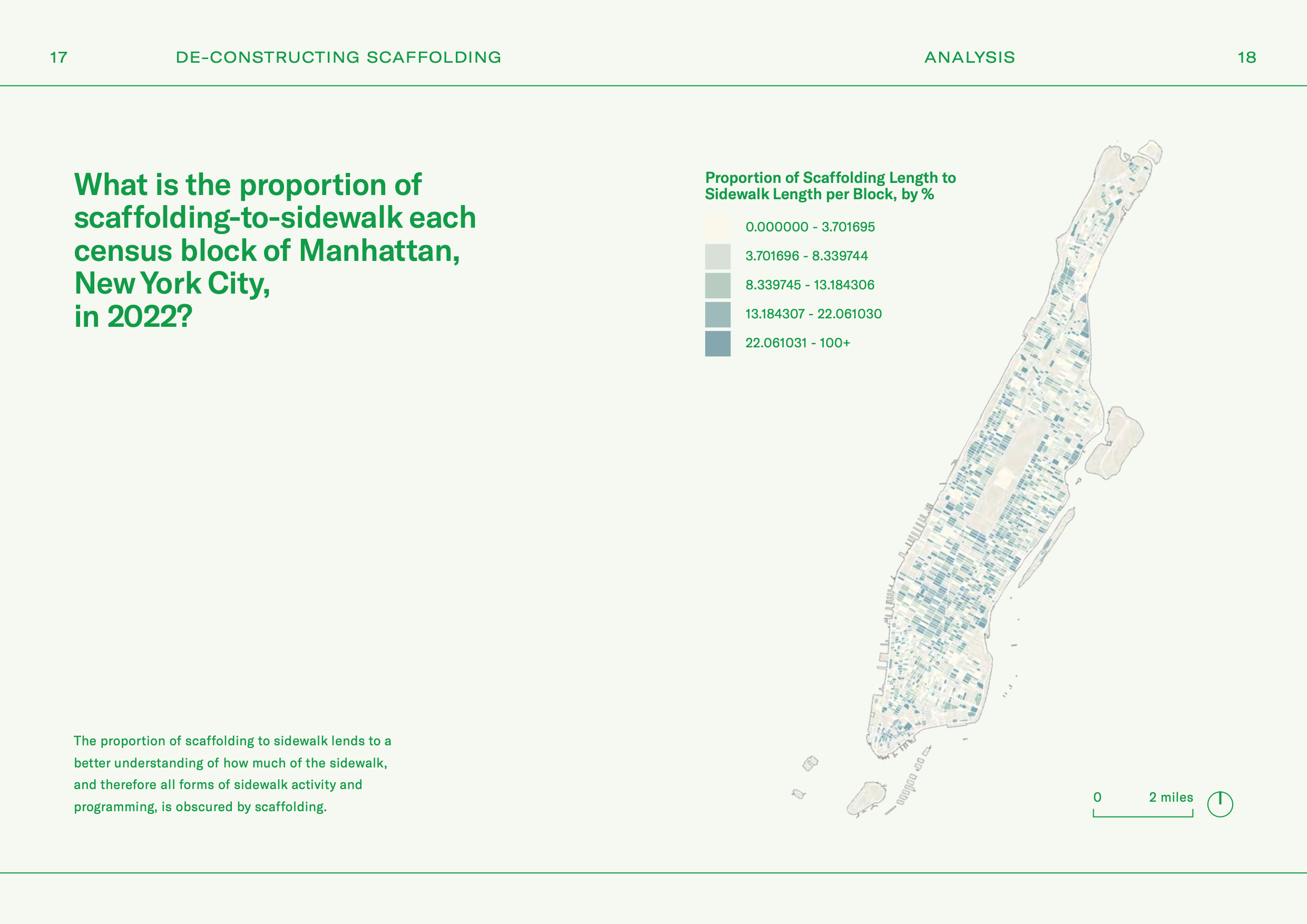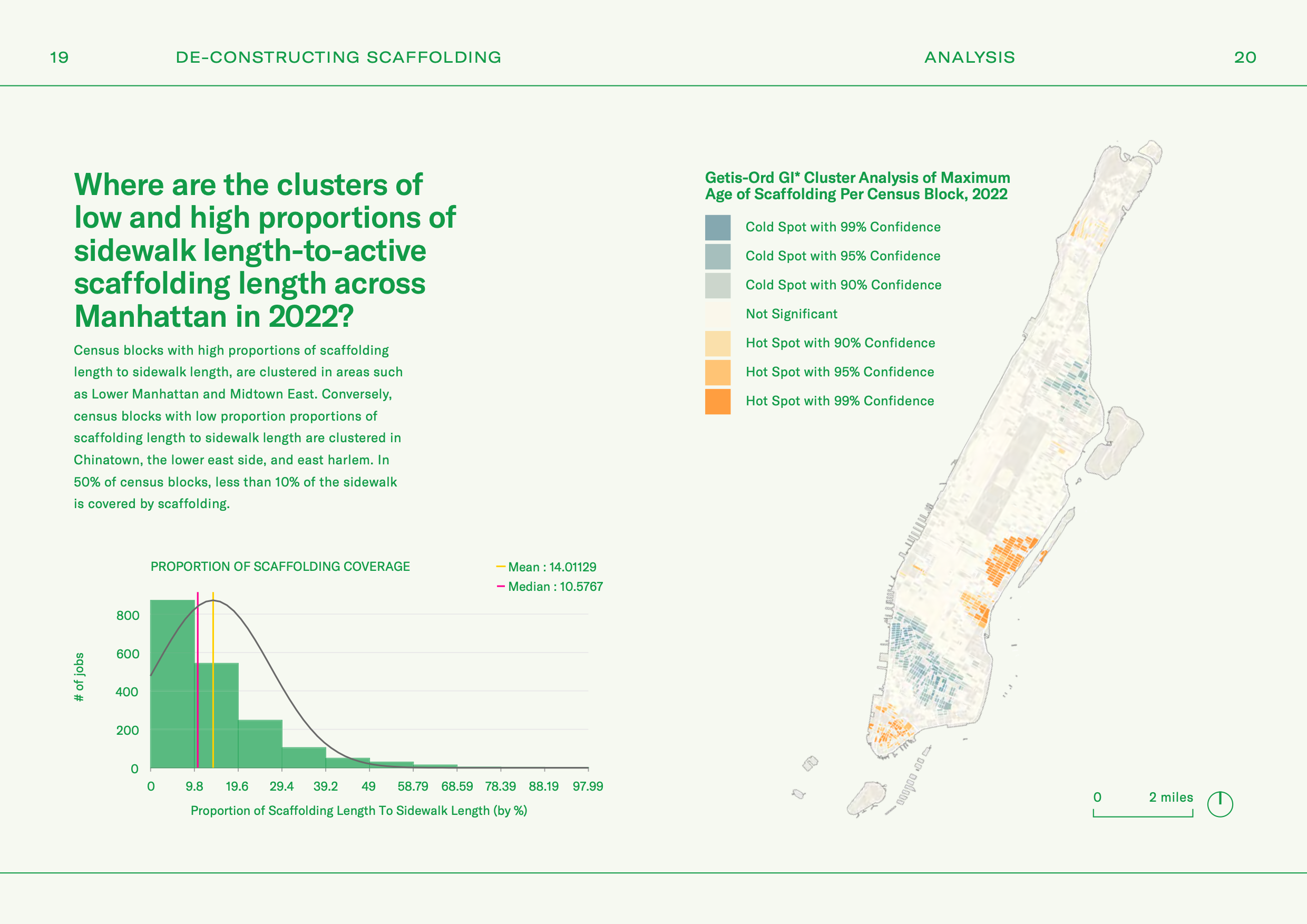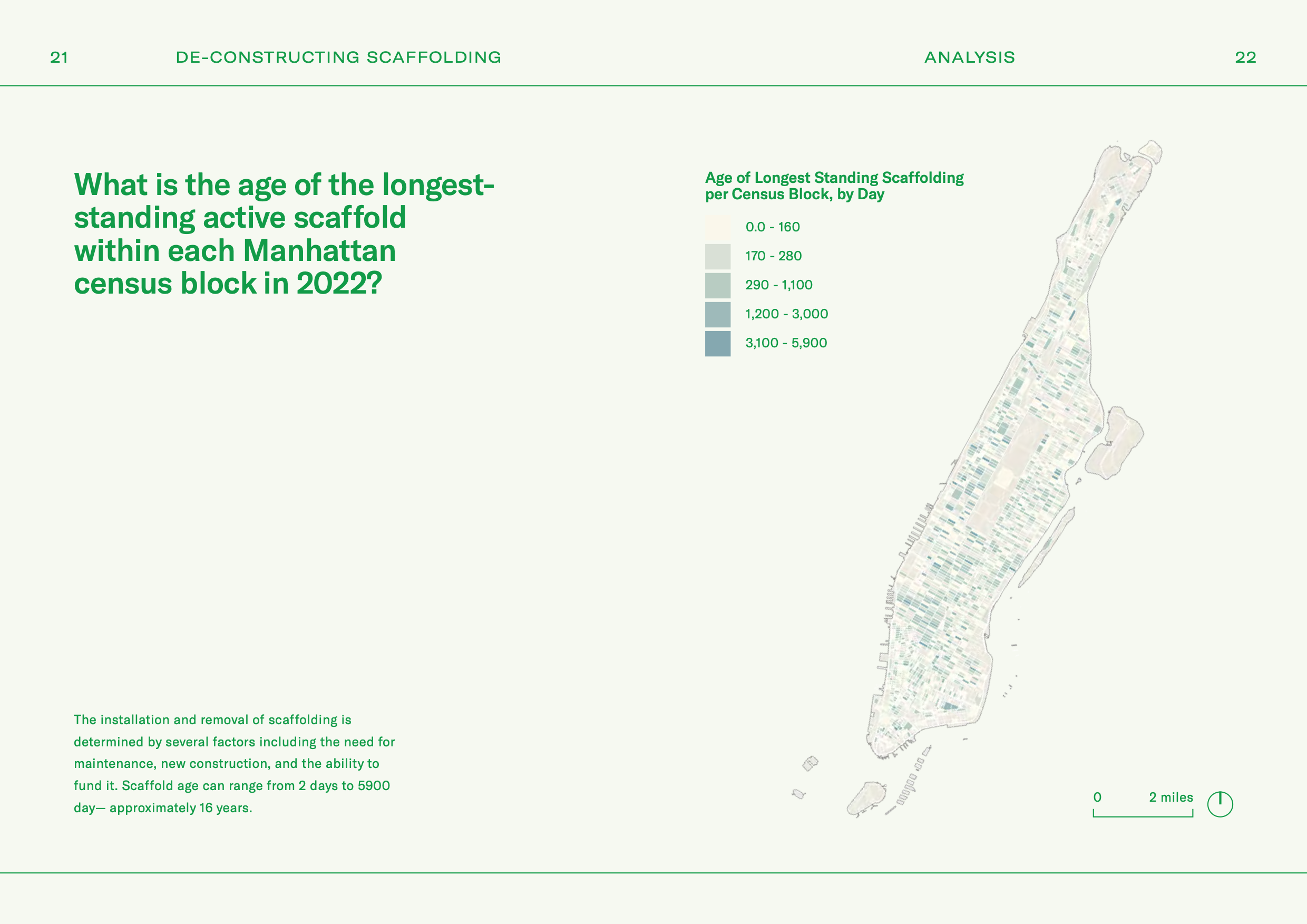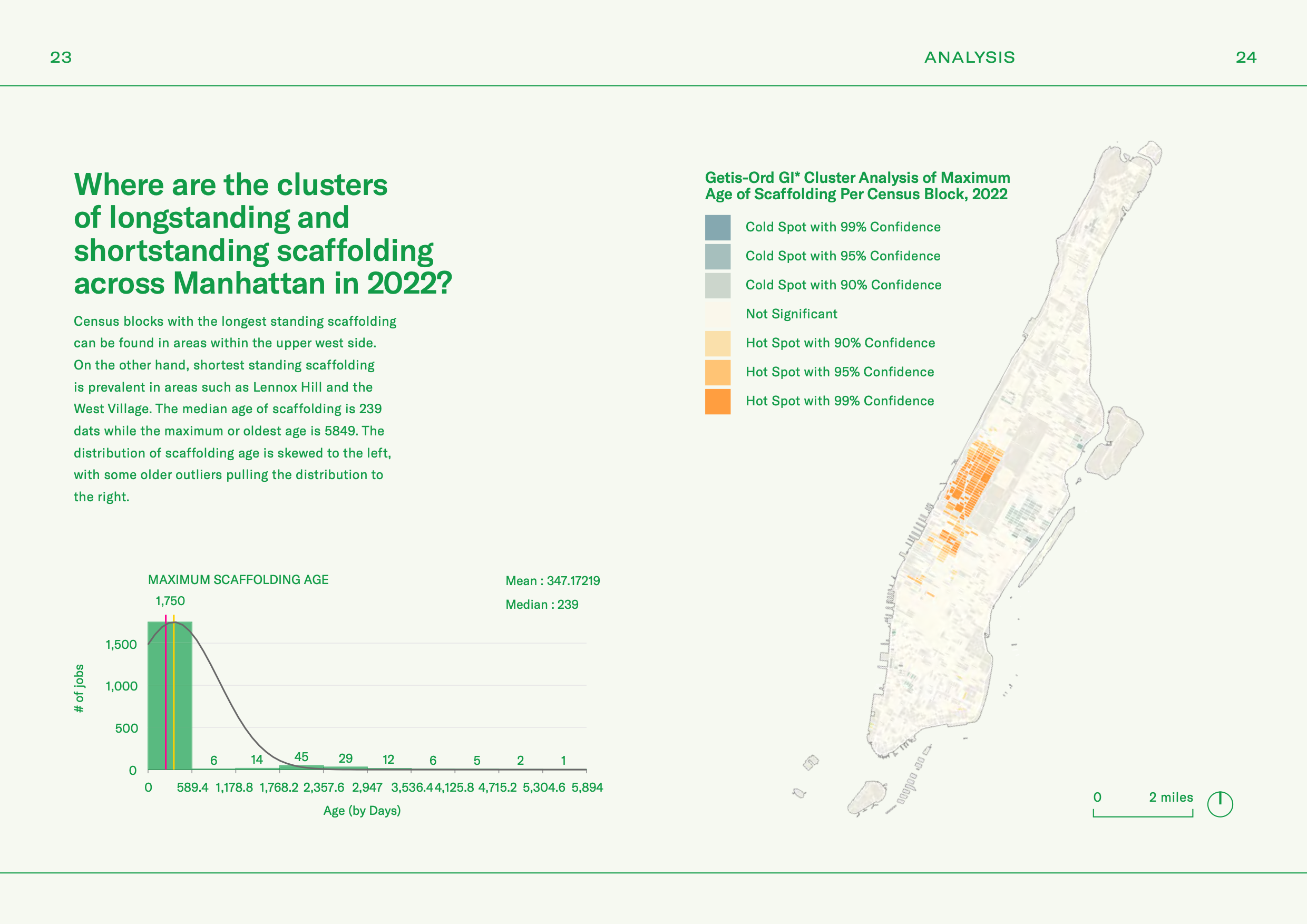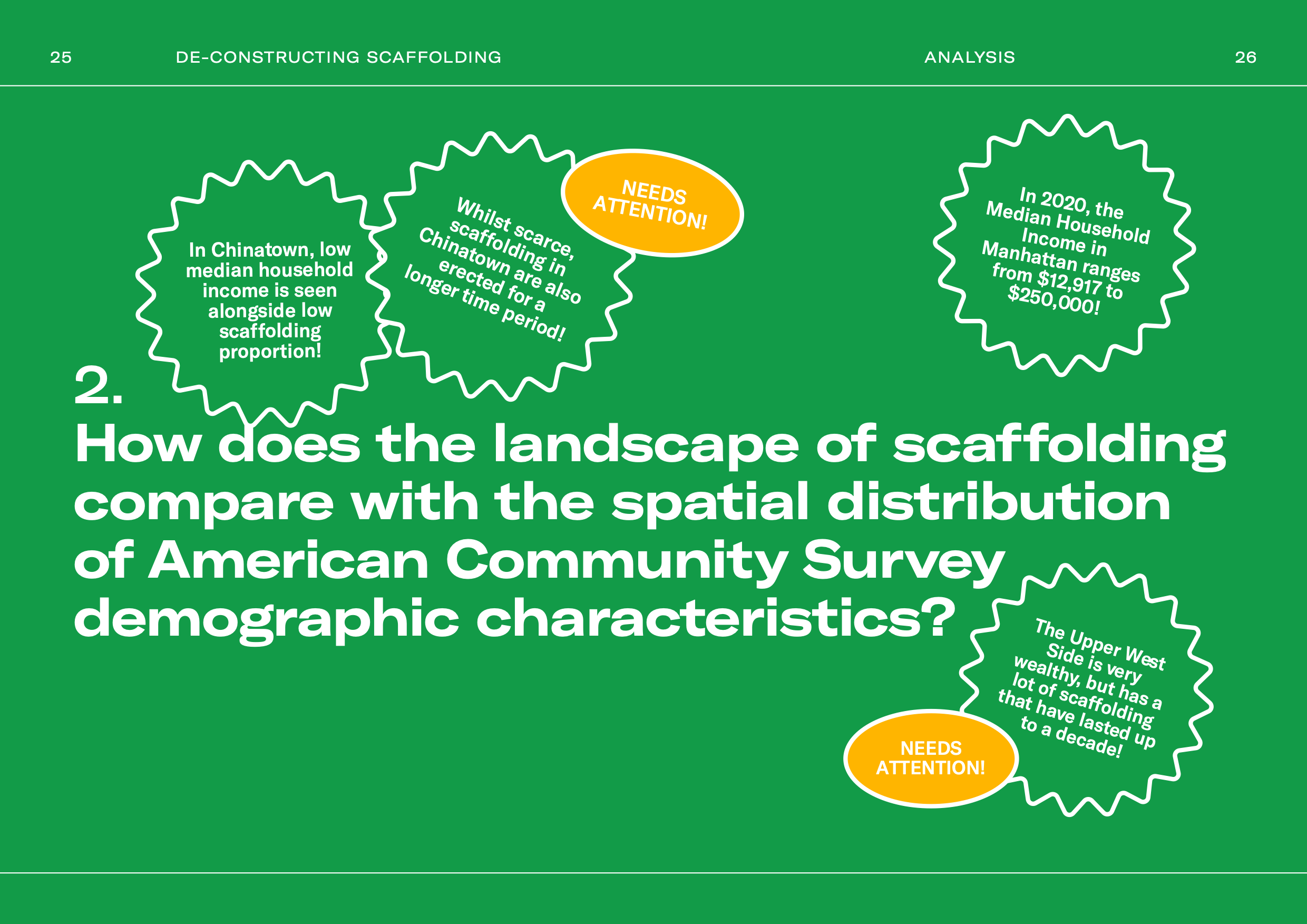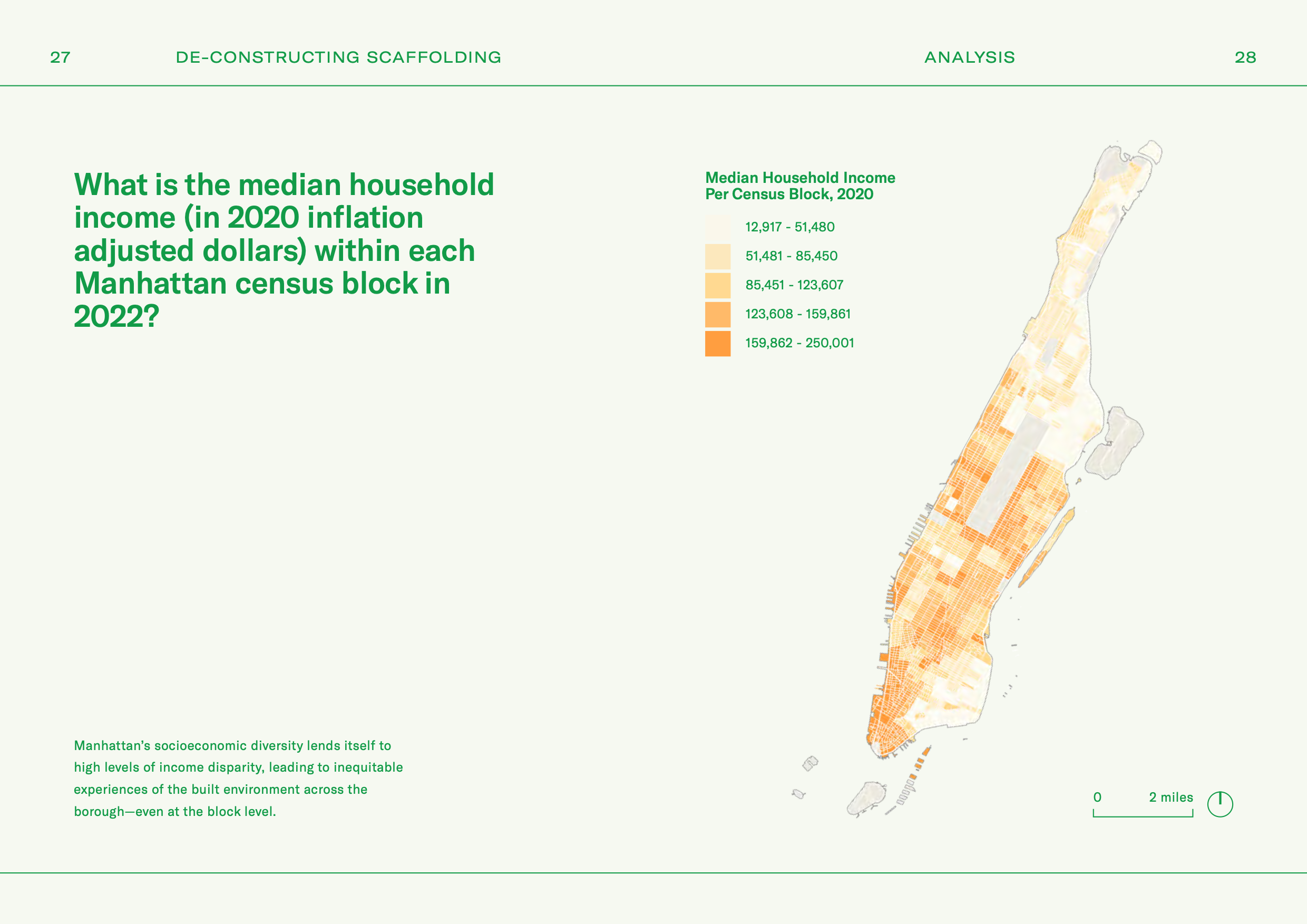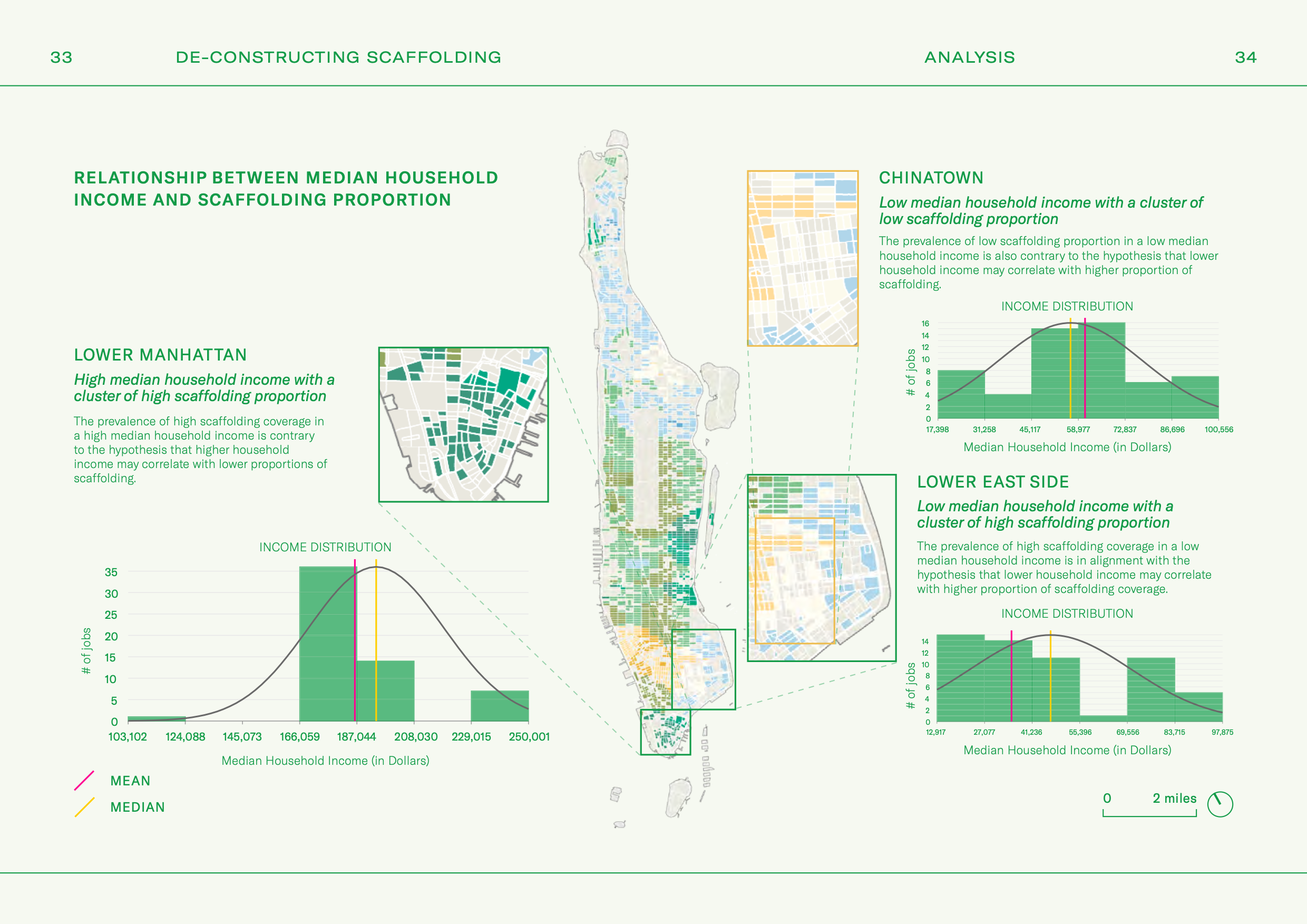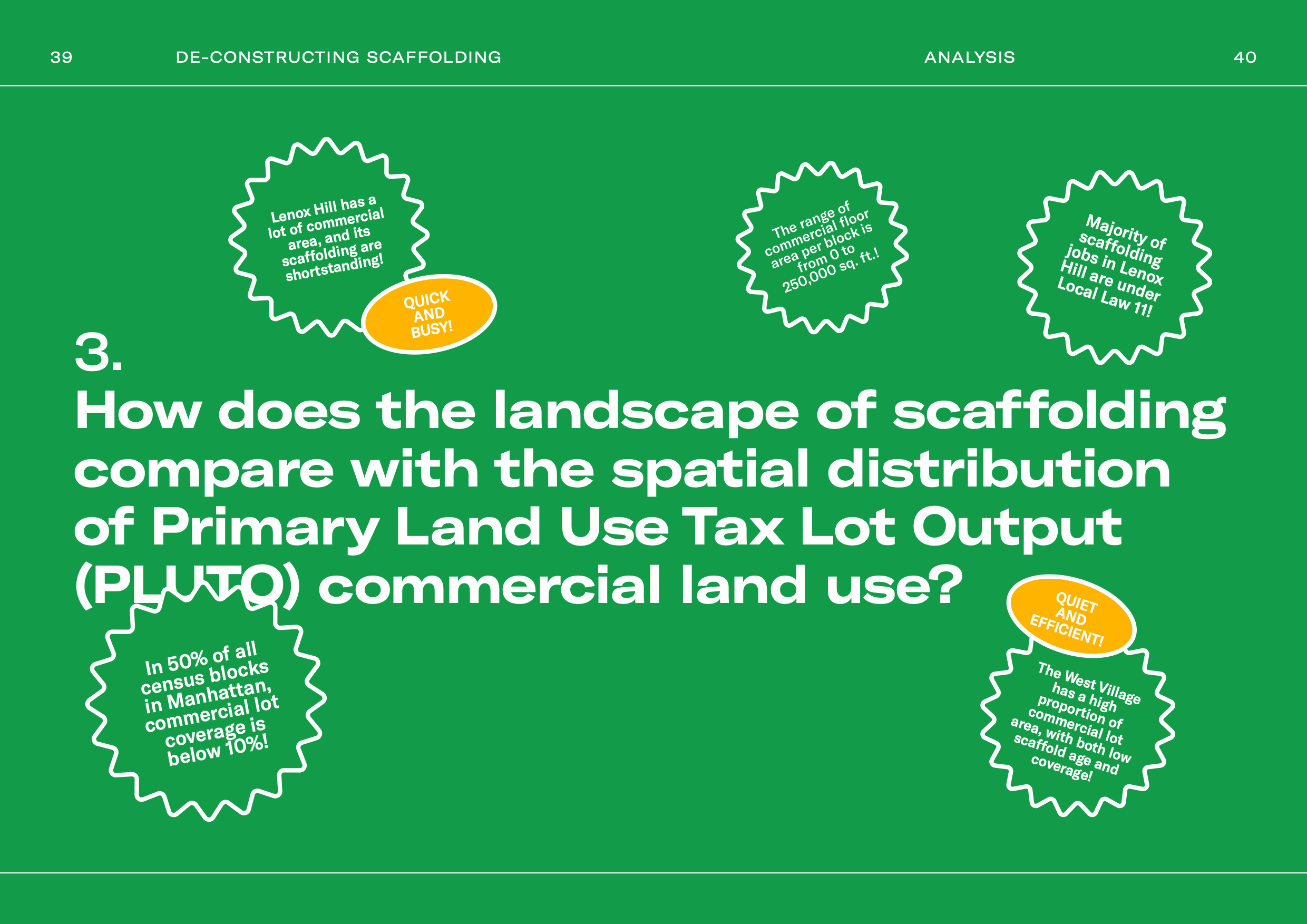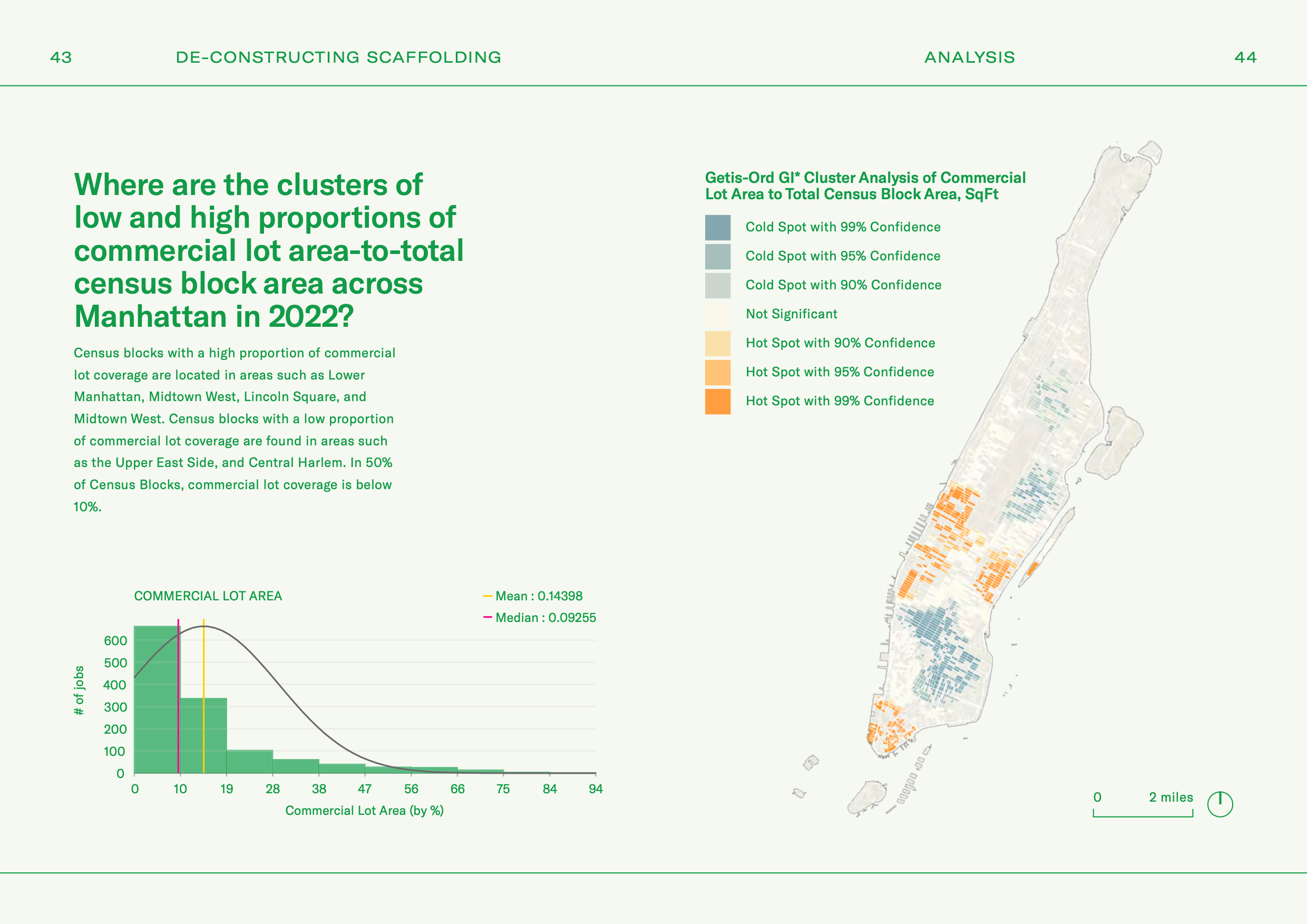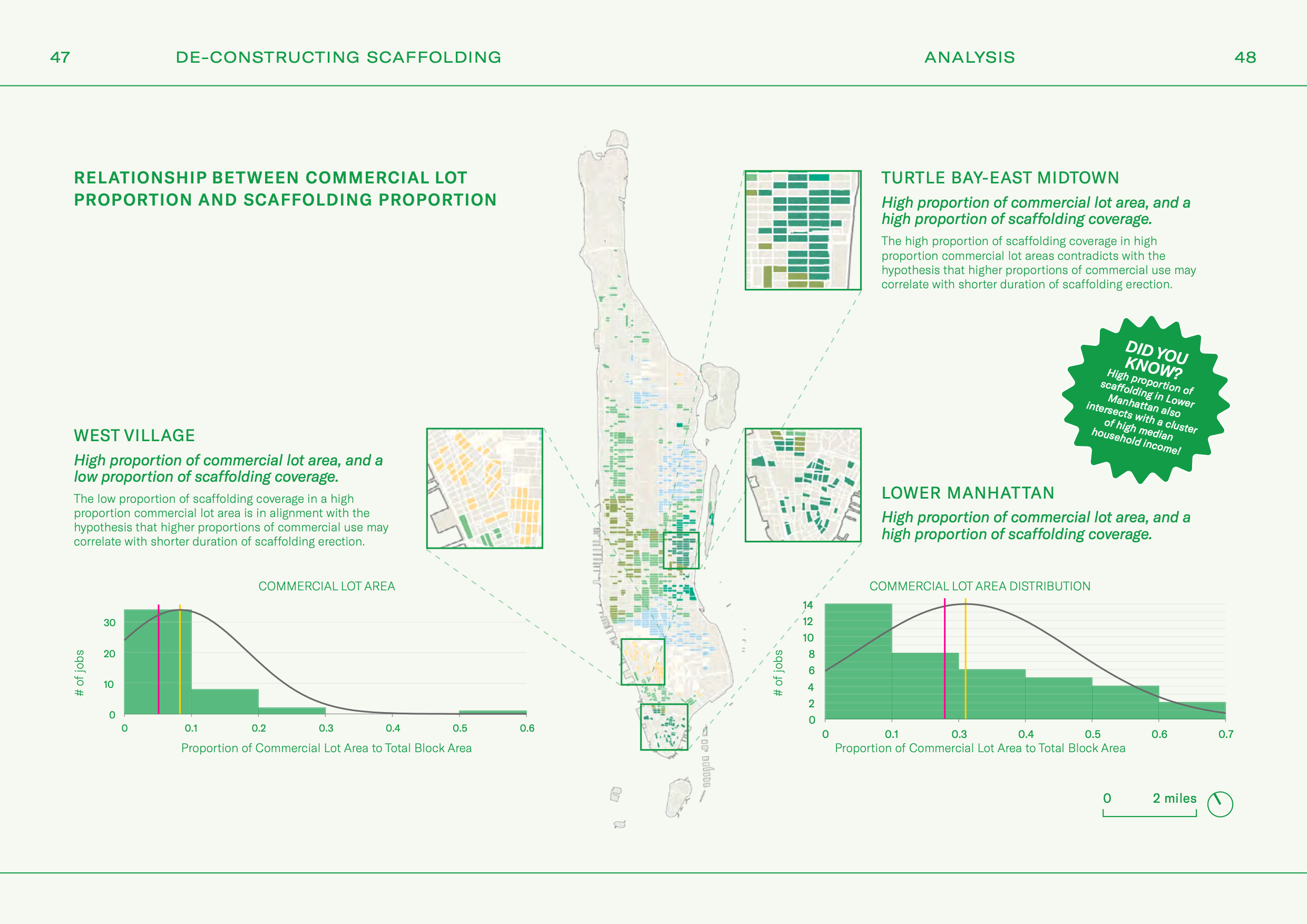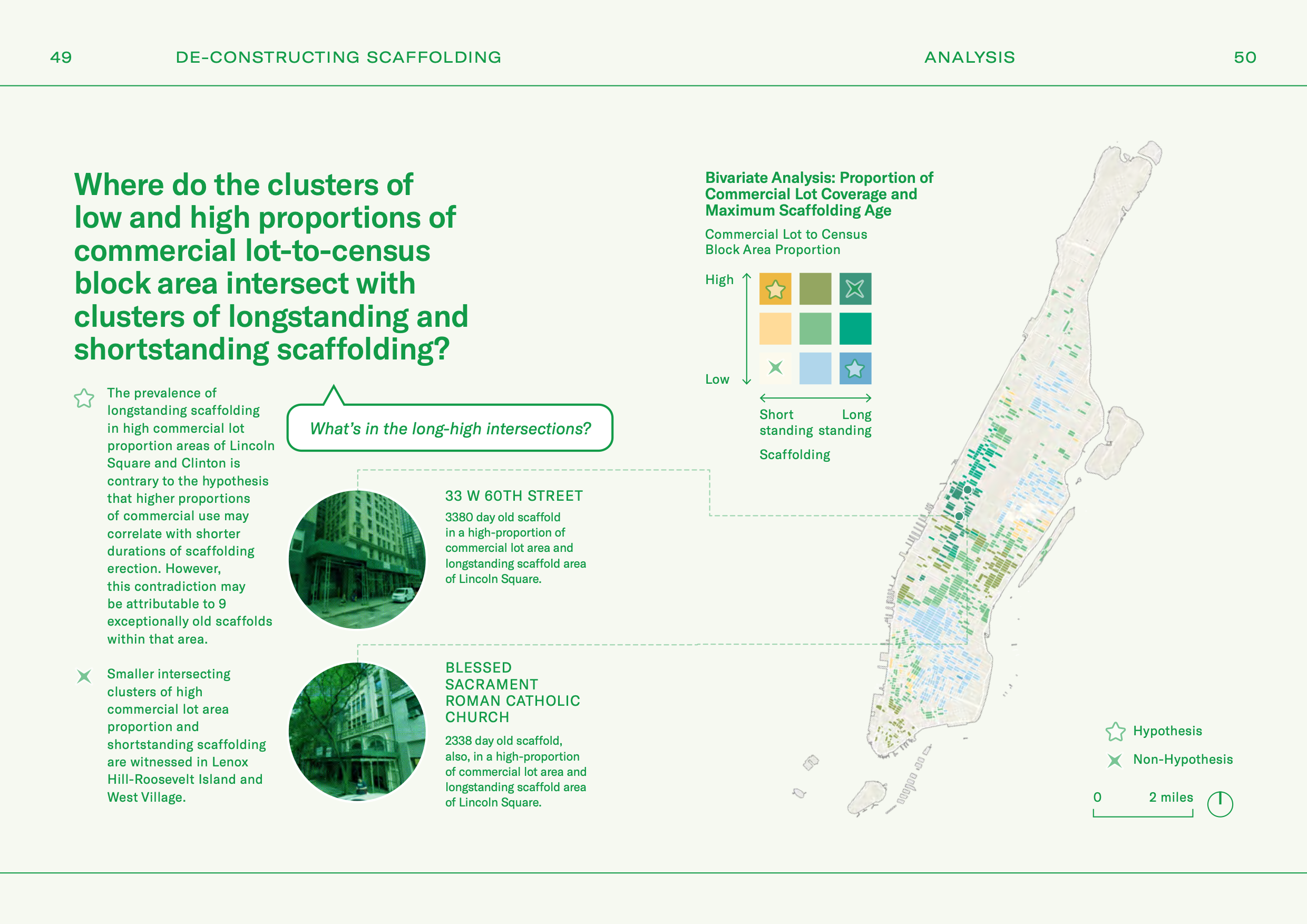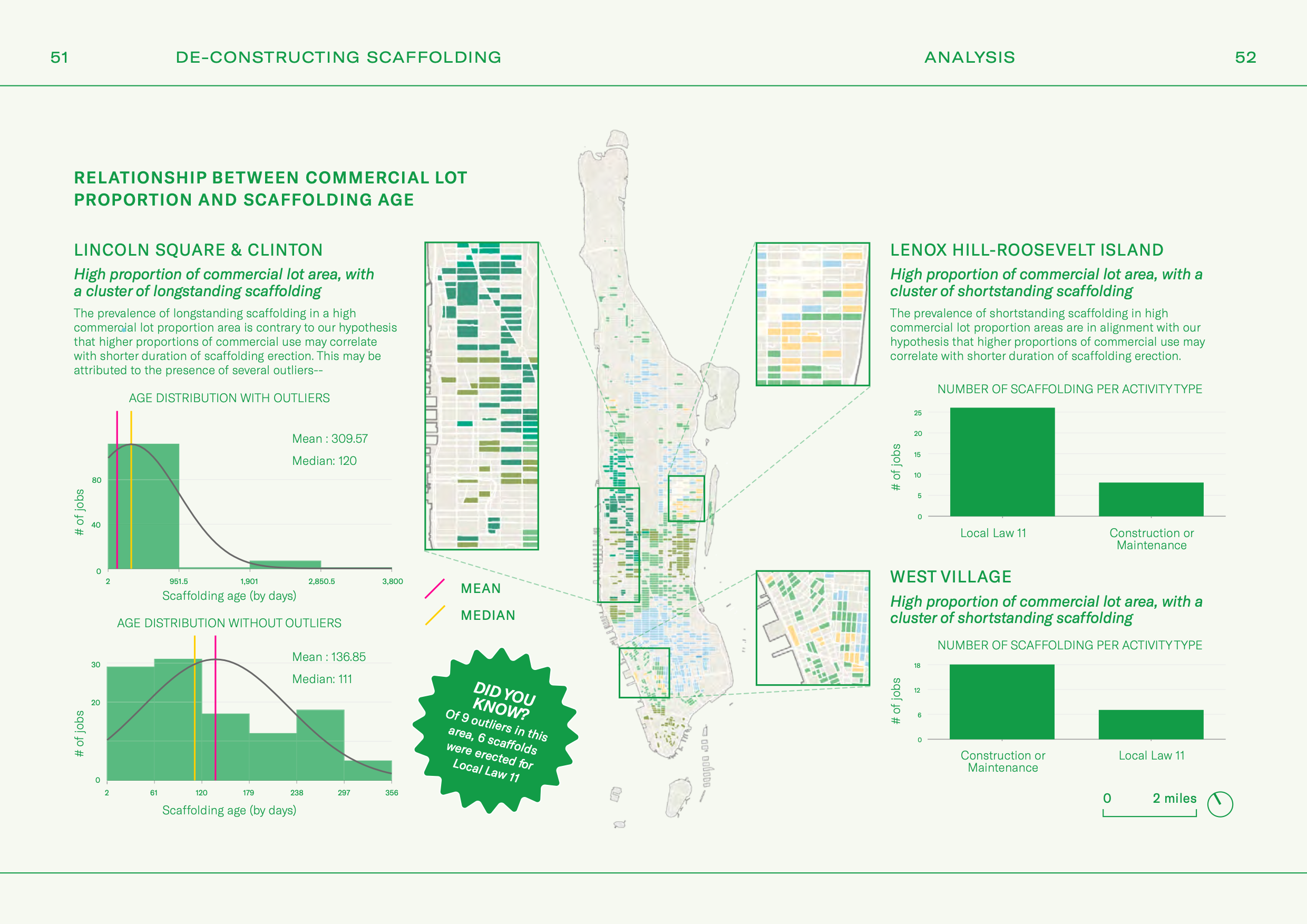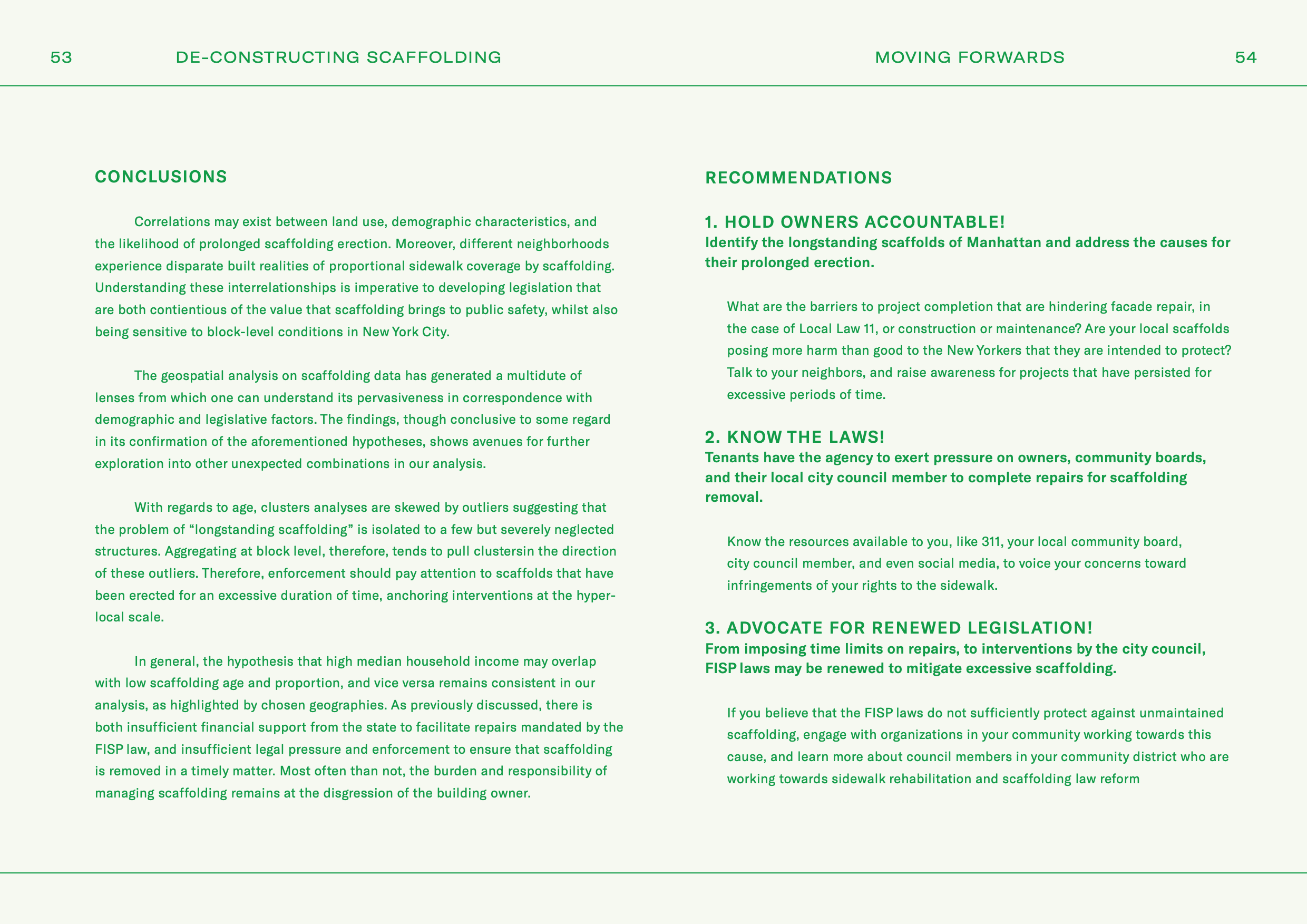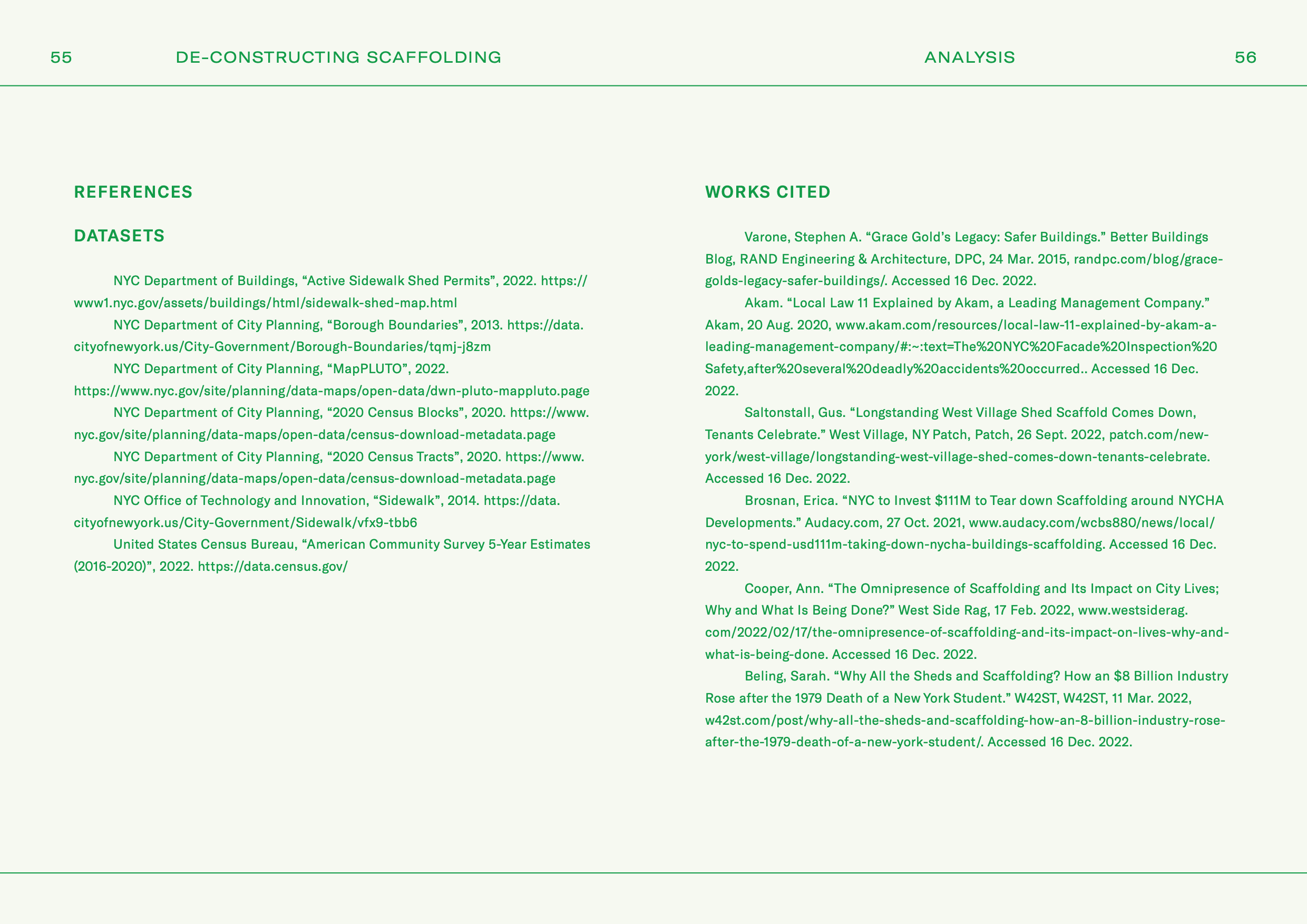
Partner: Annika Nina Yu
Fall 2022
Course: Geographic Information Systems, Columbia University
Instructors: Professor Leah Meisterlin and TA Daniel FroelichDeconstructing Scaffolding
Applications
ArcGIS Pro, Python, Adobe Illustrator, Adobe InDesign, NYC Open Data
Methods
Getis-Ord Gi* Clustering Analysis, Zone of Indifference, Spatial and Summary Statistics, Geoprocessing, Proportional Split, Split Feature, Spatial Join, Bivariate Analysis
The built environment of New York City is characterized by its scaffolding– a seemingly permanent and omnipresent architecture that articulates the streetscape and pedestrian experience. The symbolism of scaffolding is in the eye of the beholder– often drawing contrasting sentiments. For some, scaffolding provides a haven from inclement weather, a temporary shelter for the houseless, a makeshift gymnasium, or a public canvas on which art is shared. For others, the structure represents the unfinished, perhaps hazardous underpasses that would much rather be avoided.
The goal of this study is to identify how the placement, coverage, and duration of scaffolding erection varies amongst neighborhoods in Manhattan, and how those differences are an indicator of greater neighborhood conditions– specifically, median household income and commercial land use.
Read the Full Report
